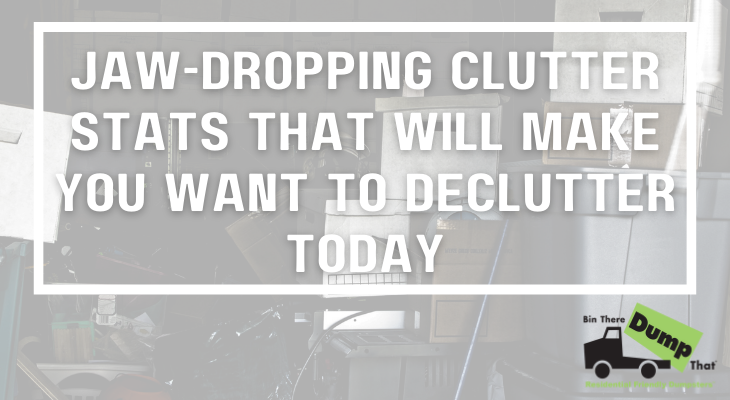
12 Jaw-Dropping Clutter Statistics That Will Make You Want to Declutter Today!
Clutter has a way of creeping into our lives, slowly but steadily taking over our spaces and minds. The impact of clutter is more significant than you might think, affecting not just our physical surroundings but also our mental well-being. In this article, we will explore some eye-opening clutter statistics that highlight the need for decluttering and delve into essential questions about how to start decluttering your home, the number of people affected by clutter, the average amount of clutter in homes, and the difference between clutter and hoarding.
1. The Clutter Epidemic
Over 80% of individuals find themselves grappling with stress and anxiety directly linked to the clutter in their living spaces. This statistic emphasizes the pervasive impact of clutter on mental well-being.
2. The Average Amount of Clutter
Within the average American home lies a staggering 300,000 items, showcasing the extent to which possessions accumulate and contribute to a cluttered environment.
3. The Financial Impact
Annually, Americans invest approximately $2.7 billion in storage units, underlining the financial strain clutter imposes as individuals seek solutions to accommodate their excess belongings.
4. Clutter and Mental Health
Studies illuminate a direct correlation between a cluttered home and elevated cortisol levels, resulting in heightened anxiety and disturbances in sleep patterns.

5. Poor Eating Choices
In cluttered environments, individuals are prone to making unhealthy eating choices, a phenomenon reflected in statistics. Those residing in extremely cluttered homes face a staggering 77% higher likelihood of being overweight. This correlation between clutter and dietary decisions highlights the interconnectedness of physical surroundings and lifestyle choices.
6. Clutter Causes More Housework
Eliminating clutter is a game-changer for housework, as it accounts for a remarkable 40% reduction in tasks within the average home. This statistic underscores the significant impact decluttering can have on streamlining daily chores and creating a more manageable living environment. It emphasizes the transformative benefits of simplifying living spaces, not just for aesthetic reasons but also for the practical advantage of minimizing the time and effort invested in household upkeep.
7. Overwhelming Amount of Clutter
Over half of Americans, specifically 54%, express feeling overwhelmed by the clutter in their lives. Surprisingly, a significant 78% of individuals admit to having no clear idea about how to tackle and manage the excess belongings that contribute to this overwhelming clutter.
Looking for a FREE Quote?
Our Dumpster Consultants are waiting to help you find an affordable solution to your waste disposal needs; we can't wait to help you with your project!
8. Environmental Impact of Clutter
Beyond personal and financial considerations, clutter significantly contributes to environmental issues. The production and disposal of excess consumer goods result in increased waste and energy consumption, further emphasizing the imperative of adopting sustainable decluttering practices.
9. Digital Clutter
In the digital age, clutter extends beyond physical spaces. The average person receives around 121 emails daily, contributing to digital clutter and decreased productivity. Additionally, the average American accumulates over 1,000 digital files on their computer, emphasizing the necessity of organizing virtual spaces.
10. Social Impact
Cluttered living spaces can strain relationships, with couples engaging in approximately three arguments per month related to clutter. Furthermore, family members in cluttered environments report higher stress levels and decreased overall life satisfaction, highlighting the broader social impact of clutter.

11. Decluttering Challenges
Over 65% of individuals admit to feeling sentimental about possessions, making it challenging to part with items contributing to clutter. Time constraints also hinder decluttering efforts, with 47% of individuals citing a lack of time as the primary obstacle to tackling clutter.
12. Long-Term Maintenance
Studies on habit formation indicate that it takes an average of 66 days for decluttering behaviors to become automatic. This underscores the importance of consistent efforts in establishing decluttering habits for long-term success. Individuals who engage in regular decluttering routines report increased feelings of control and reduced stress over time, highlighting the transformative impact of sustained efforts.
What is the difference between Clutter and Hoarding?
While clutter and hoarding may seem synonymous, it's essential to distinguish between the two. Clutter refers to a disorganized collection of items that impairs the functionality of a space. In contrast, hoarding is a more severe mental health disorder characterized by the excessive accumulation of items and a reluctance to discard them, often leading to unsafe living conditions.
What These Clutter Statistics Mean
The clutter statistics paint a vivid picture of the pervasive impact of clutter on our lives. Decluttering is not just about creating a visually appealing space; it's a crucial step towards improving mental well-being and reclaiming control over our surroundings. Start small, set achievable goals, and embark on a journey to declutter your home today. Your mind and living space will thank you.
No comments:
Post a Comment